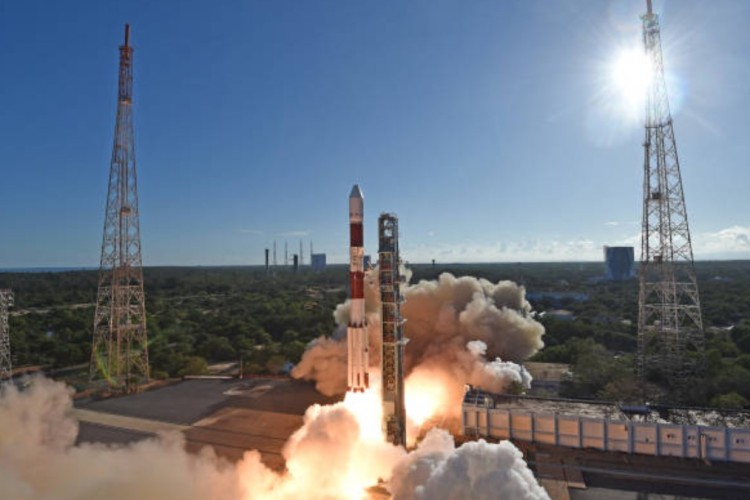India celebrated the success of its moon mission on National Space Day, August 23rd, and now aspires to emerge as a leading player in the rapidly expanding global space economy. Valued at $450 billion in 2023, the global space economy is projected to grow to approximately $1.05 trillion by 2035 (Figure 1). To seize this immense opportunity, India must reorient its efforts with renewed focus and determination, exploring commercial prospects across all viable sectors, segments, and regions.
Historically, India’s space sector—spearheaded by the Indian Space Research Organisation (ISRO)—has exemplified technological excellence and cost-effective innovation. Recent regulatory reforms have restructured ISRO into three distinct entities with clearly defined roles, placing India in a strong position to tap into global space markets.
READ | Nuclear families and retail stores: Modern India is redefining home, commerce
The liberalisation of India’s space policies, including the establishment of the Indian National Space Promotion and Authorisation Center (IN-SPACe), marks a transformative shift toward enhanced private sector participation. By simplifying regulations, offering targeted incentives, and encouraging innovation, India is poised to unlock substantial growth in its space economy.
Tapping high-growth global opportunities
To fully capitalise on the global space economy’s potential, India must strategically target high-growth sectors and regions where demand for space-based services is accelerating. There is vast commercial potential across a range of sectors that Indian private players can tap into. These include satellite manufacturing and launch services, Earth observation and remote sensing, space-based internet services, and space tourism. Each of these areas offers distinct opportunities for Indian companies to deliver value through innovation, affordability, and scalability.
Satellite manufacturing and launch services are among the most promising sectors, with growing global demand for both large constellations and small satellites. Earth observation and remote sensing services are becoming increasingly vital for industries such as agriculture, disaster management, urban planning, and climate monitoring. Similarly, space-based internet services are gaining traction, especially in regions with inadequate terrestrial infrastructure, such as parts of Africa, Southeast Asia, and Latin America—markets that Indian companies are well-positioned to serve.
In the domain of telecommunications, satellite communications offer a way to bridge the digital divide in remote and underserved areas. Climate and environmental monitoring services are gaining global relevance as climate change intensifies, and India’s capabilities can contribute to international resilience and mitigation efforts. Navigation and positioning services, particularly through India’s NAVIC system, can reduce dependence on foreign systems and enhance self-reliance in sectors like transport, logistics, and defence.
The agriculture sector also stands to benefit significantly from space-based applications, including precision farming, crop monitoring, and early warning systems for weather-related risks. Space exploration and research continue to offer both strategic and commercial opportunities, while space debris management—though still an emerging area—will become increasingly important as space traffic intensifies. By targeting these key areas, India can position its space economy for accelerated growth and global relevance, while also addressing critical developmental and technological challenges both at home and abroad.
India’s edge: Launching into the future
The growing global demand for small and nano-satellites offers immense opportunity, particularly in communication, navigation, and Earth observation. India’s economical launch services—especially via ISRO’s reliable Polar Satellite Launch Vehicle (PSLV)—have attracted international clients. PSLV’s successful launch of numerous foreign satellites is a testament to India’s ability to deliver cost-effective, dependable launch solutions.
India’s satellite communication services can be scaled to meet global demand, especially in remote and underserved regions. Likewise, India’s capabilities in environmental monitoring, navigation, and agriculture applications—such as through the NAVIC satellite system—position it as a provider of strategic digital infrastructure, reducing dependence on imported services.
India’s private sector is gaining ground with startups like Pixxel, Skyroot Aerospace, and Agnikul Cosmos pioneering advanced technologies such as hyperspectral imaging satellites, 3D-printed rocket engines, and customisable launch vehicles. These innovations demonstrate the growing maturity of India’s space ecosystem.
In particular, Earth observation services for agriculture, disaster response, and climate analytics are gaining traction globally, and Indian startups are already catering to these needs. The growing market for space-based internet—especially in regions like Africa and Southeast Asia—presents a compelling opportunity. India could deploy its own constellations or partner with global players like SpaceX or OneWeb to help bridge the global digital divide.
Emerging segments like space tourism, though nascent, offer long-term promise. Additionally, defense and security applications—especially satellite-based intelligence, surveillance, and reconnaissance (ISR)—offer both strategic and commercial value.
India is uniquely positioned to lead in the global space economy by capitalising on its affordability, reliability, and growing private sector innovation. With Russia’s diminished participation in the global market due to sanctions, India has a valuable opportunity to expand its role and fill a strategic gap.
Public-private partnerships (PPPs) can serve as a powerful mechanism to accelerate technological advancements and drive competitiveness. Such collaborations can create a dynamic space ecosystem, where private enterprises complement ISRO’s experience and infrastructure.
Investing in talent and global partnerships
To sustain long-term growth, India must invest in building human capital through advanced education and training programs. A skilled workforce is essential to powering future innovation in space technologies.
India should also proactively seek international cooperation, especially with regions like Africa, Southeast Asia, the Middle East, and Latin America. These geographies represent untapped markets and offer scope for partnerships in satellite services, remote sensing, and connectivity solutions.
As India expands its space ambitions, it must also prioritise sustainability by adopting best practices in space operations, debris management, and environmental responsibility. A commitment to sustainability will enhance India’s reputation as a responsible space power and ensure the long-term viability of its space initiatives.
With its proven strengths, growing innovation ecosystem, and strategic reforms, India is well-positioned to rise as a formidable player in the global space industry—both as a driver of economic growth and a leader in technological advancement.
Dr Ram Singh is Professor and Head, IIFT, New Delhi. Areej Aftab Siddiqui is Assistant Professor, Dubai Business School, Dubai University.

